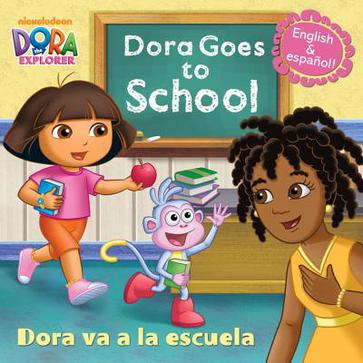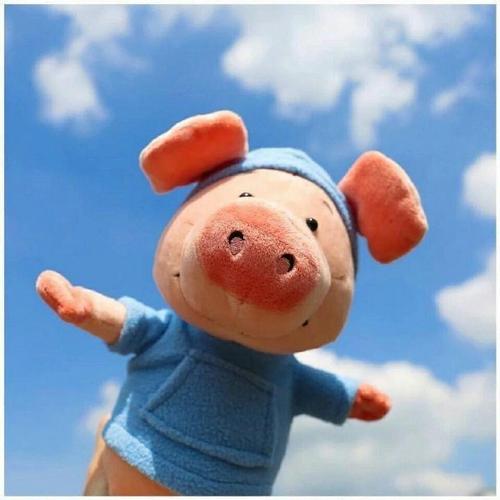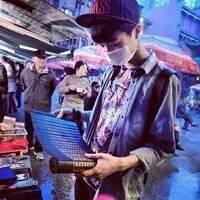 峨眉山
峨眉山2020“外研社·国才杯”大学生英语演讲、写作大赛湖南赛区复赛举办
红网时刻记者 任晔 通讯员 周亚鹏 长沙报道10月25日,2020“外研社·国才杯”大学生英语演讲、写作大赛(高职高专组)湖南赛区复赛在湖南外国语职业学院举办。大赛现场。本次湖南赛区复赛由湖南省高等教育学会大学外语专业委员会和外语教学与研究出版社共同主办,由湖南外国语职业学院承办,来自40所院校的149名选手从校级初赛中脱颖而出,进入本次演讲、写作大赛复赛。湖南省教育厅职成处处长余伟良、湖南外国语职业学院董事长宁平、外语教学与研究出版社职教分社社长李淑静出席大赛开幕式并致辞。湖南教育电视台、红网对本次大赛盛况进行了转播。写作大赛现场。演讲大赛现场。此次大赛在内容上持续创新,紧跟时代形势和经济社会发展需求,紧密贴合职场实际与社会生活,从思维能力、实践能力、创新能力和解决问题的能力等多个维度考查学生的英文沟通、信息提取、逻辑分析、人文思辨等综合能力及职业素养,促进学生英语应用能力的整体提高,为其未来职场发展和个人可持续发展奠定良好基础。比赛中,选手们交流多元思维、探索书面沟通、弘扬时代新知,彰显了新一代大学生兼具家国情怀和全球视野的时代风采。写作大赛特等奖选手。演讲大赛特等奖选手。经过激烈角逐,来自湖南外国语职业学院的张嘉慧和彭震、长沙航空职业技术学院的黄信霖获得演讲复赛特等奖。来自湖南高速铁路职业技术学院的张羚、湖南外国语职业学院的柯静茹、湖南邮电职业技术学院的于诗雨、湖南汽车工程职业学院的陈庆和湖南中医药高等专科学校的刘楚昱获得写作复赛(公共英语组)特等奖。湖南幼儿师范高等专科学校的谢雨晴、长沙商贸旅游职业技术学院的张译文和湖南工程职业技术学院的赵玮轩获得写作复赛(英语专业组)特等奖。这些选手将代表湖南省参加2020“外研社·国才杯”全国英语演讲、写作大赛(高职组)总决赛,并获得“国才考试”(国际人才英语考试)任一科次的考试报名费奖励。本次大赛采用无纸化写作与在线阅评的方式,通过优化升级后的“iTEST职业院校测试与训练系统”,以更加智能稳定的系统支持赛事的扩大与创新,让大赛插上“科技的翅膀”,使大赛更精彩多元、智能高效。据悉,2020“外研社·国才杯”全国英语演讲、写作大赛(高职组)总决赛将于今年12月举行。
 一恋
一恋测评|对比了14款点读笔,终于Pick了这支“全网最强”!(上)
各位家长应该都知道3-12岁是对孩子来说最重要的英语启蒙阶段,在这个过程中,能够抢先一步让孩子对英语学习有初步的系统认知,培养好的英文素养,提高阅读能力,再养成一口纯正地道的英语发音是我们每个家长都希望的。我是一名在职妈妈,孩子今年三岁半了,正是英语启蒙的好时候,可是由于工作原因,我平时确实没什么时间陪他练英语,顶多周末的时候可以带着他学一下,可我自己大学学的英语也忘得差不多了,主要是发音不够标准,很怕误导了孩子。为了改善这个情况,其实我也在ipad上面下载过很多幼儿英语教育类app,想让孩子自己在上面学一学,可是每次都是软件打开还没几分钟呢,他就退出去玩别的游戏去了。因此,我一直想找一个专业的学习工具,可以真正激发孩子的兴趣,同时也能帮着我一起辅导孩子,于是我就注意到了点读笔,这个东西比点读机便宜,使用也更方便,点哪里听哪里;又比单词笔一类产品的功能多很多,可以放音乐,听故事,玩互动游戏……现在也算是风头正劲。我周围已经有很多朋友给自己的娃买点读笔了,买什么牌子的都有,基本上人手一只。我家孩子也表现出了一定的兴趣,这让我还真是挺惊喜的,所以我也想购入一支尝试一下,希望能助力孩子的英语学习,开个好头儿,以上就是这篇测评的初衷。我认为,看一支点读笔到底好不好,使用体验和使用效果都是至关重要的。使用体验上,点读笔的材质是否安全卫生,握感是否舒适,外观设计是否美观可爱,整体质量过不过关等,都是需要考虑的因素;使用效果上,点读笔的英文发音是否标准地道,音质如何,配套的教材资源的质量和数量,是否支持网络连接或云端平台,趣味性和互动性强不强,是否能真正吸引到孩子从而真正地学到东西获得进步,这也是非常非常重要的,也是我最为看重的一支好的点读笔,一方面能够有效培养孩子学习英语的兴趣,锻炼口语和阅读能力;另一方面也能寓教于乐,让娃们主动远离ipad这类非教育电子产品,转而投入趣味英语学习,同时像我这种英语水平有限,工作繁忙的家长也能够相对省时省力,稍微松一口气,购入一支点读笔确实还是有一定必要的。在淘宝和京东这类的网站上进行了相关搜索之后,不难发现现在点读笔的市场已经比较成熟了,市面上的点读笔多种多样,简直是让人眼花缭乱。价格上最便宜也要近两百,贵的更是高达四位数,再加上配套的英语教材和资源,一整套下来的花费确实也不算亲民了。秉着一名老母亲勤俭持家不能花冤枉钱的原则,入手前功课一定要做足。所以,在浏览了无数页面,仔细研究了各类点读笔的功能参数,也亲手体验了几只身边孩子的点读笔实物之后,我盘点了目前市面上14款点读笔,从多个角度横向对比,评测优劣,一步到位!最后我也会说明我的最终选择,给出一些购买建议,但是自己孩子喜欢才是最重要的,家长们还是要根据自家的情况来进行选择,让孩子能抓住英语启蒙的最好阶段,占领先机!那么接下来,这篇测评会从以上各个方面,综合价格信息来全方位盘点共14款点读笔,测评涉及的品牌有:毛毛虫,贝灵,小米,学而思,外研通,纽曼,小达人,小霸王,卷之友,趣威,优学派,洪恩,爱看屋,爸妈网ta。因为测评的产品高达14种,一一赘述会有太多无效信息,我直接给大家看一下最直观的对比结果。下面这张表格包含了笔杆材质、MP3播放功能、录音功能、 支持Wifi,点读视频,是否配套英文原版教材以及商品的价格的对比。这几项都是我个人很看重的点,或许不够全面,仅供大家参考。有几项因素没有列进表格,诸如MP3播放,因为测评的14款点读笔都支持此项基本功能;还有自带内存大小,所有点读笔都集中在8G-16G,区别只在于能否支持tf卡扩展。从表格中可以看出,这14款点读笔还是存在许多差别的。从使用体验的角度来看,首先是笔杆材质,大部分点读笔都采用了环保ABS材质,而毛毛虫,贝灵,学而思,米兔,小霸王还另外采用了食品级硅胶,外研通则使用了食品级不锈钢。左为米兔;右为贝灵2.0我手边现在有贝灵和米兔这两支点读笔,都是采用了食品级硅胶的,负责任地讲手感确实好于传统ABS太多,格外的细腻柔滑,握感也舒适,米兔的手感还要好于贝灵一些。至于外研通采用的食品级不锈钢,我个人不是很喜欢,毕竟小孩子喜欢咬东西,不锈钢还是太硬了,怕把牙磕坏或者铬到手。所以如果家长们非常在意材质的使用感和安全性,我建议直接从采用食品级硅胶的几支笔里挑选。其次是内存问题,只有爸妈网TA的点读笔支持扩展内存,用户自己可扩展8G-32G的内存,扩展后无疑是全部14款中内存最大的笔了,但至于这么大的内存孩子是否用得上,存疑。至于点读笔的功能性这方面,根据表格中勾叉的数量上,我首先排除了纽曼、爱看屋、洪恩、小达人、小霸王等几个品牌的点读笔,尤其是其中有几款虽然价格不菲,高达四五百元,功能却并不丰富,性价比太低了。首先将这批点读笔剥夺“全网最强点读笔”的竞争资格,下篇再让剩余选手一决雌雄。
 红蚂蚁
红蚂蚁(外研版)初中英语九年级上册知识点归纳总结
Mole 1一、重点短语1. 从……出来 get out of ...2. 在……的顶上 on top of ...3. 期望…… look forward to ... 4. 穿过 go through5. 朝……望过去 look across6. 同意 agree with7. 在我看来 in my opinion8. 多于 more than9. 无数的 millions of10. 加入 join in二、重点句型1. be not sure... 对……不确定2. There be nothing to do... 没有什么可以……3. There be no sign of ... ……没有迹象4. I think... 我认为……5. It’s about ...wide and ...high. 大约多宽多高。三、重点语法Mole 2一、重点短语1. ……末尾 the end of 2. 去野餐 have a picnic3. 摆餐桌 lay the table4. 聚在一起 get together5. 倒数 count down6. 取决于 depend on7. 一……就…… as soon as8. 对……表示感谢 give thanks for...9. 大量 plenty of 10. ……的开始 the start of ... 11. 也 as well12. 度假 take a vacation 二、重点句型1. It is a time for ...是……的时候了。2. Is there anything special...?……有什么特别的事情吗?3. teach sb how to do...教某人怎样做……4. I hope that...我希望三、重点语法(一)不同身份1. 表示主从句的动作同时发生或几乎同时发生时,这类连词(组)有:when, while, as soon as。eg:When I felt hungry, my friend gave me a hamburger. While I was working, my mother called me. Xiaoming let me know as soon as he bought the tickets.2. 表示主从句的动作先后发生时,这类连词有:before, after。eg:The thief had run away before the police arrived. After you finish the task, I will send you a present.3. 表示主句动作为可持续性时,即主句谓语动词为持续性动词,这类连词有:until, since。eg:I watched TV until my father came back. She has saved money since she got the job.(二)时态呼应在时间状语从句中,主句和从句之间的时态呼应问题一般分下列三种情况:1. 当从句表示“将来”的意义,用一般现在时,主句用一般将来时,即“主将从现”原则。eg:She’ll be angry when she sees the broken window.2. 主句是祈使句,时间状语从句用一般现在时。eg:Turn off the tap when you brush your teeth.3. 主句是一般过去时,时间状语从句也要用与过去相应的时态。eg:He was fond of drawing when he was a child.Mole 3一、重点短语1. 为……而死 die for...2. 得知 learn about3. 放弃 give up4. 独自地 on one’s own5. 感到骄傲 be proud of6. 足够好 good enough7. 那时 at that time8. 最后 in the end9. 并且 as well as10. 死于 die of11. 照顾 take care of 12. 又一次 once again13. 需要 in need of 14. 不得不 have to二、重点句型1. one of the best... 最好的……之一2. manage to do... 设法做……3. start doing... 开始做……4. stop doing... 停止做……三、重点语法because 作连词,意为“因为”,表示必然的因果关系,语气较强,通常放在主句之后,若需强调则放在主句之前,常用来回答疑问词“why”提出的问题,例如:We have to play inside because it is raining.因为下雨,我们不得不在屋里玩。so 可以引导结果状语从句,但是 so 和because不能同时使用,例如:Haste makes waste, so be careful as you work.欲速则不达,所以工作时要仔细。so that 引导的目的状语从句中通常带有 can, could, may, might, should 等情态动词。so that 引导的从句在主句后,从句前不用逗号,例如:I stay on so that he may not feel lonely.我留下来以使他可能不会感到孤独。Mole 4一、重点短语1. 叫醒 wake up2. 关掉 turn off3. 担心 be worried about4. 出差 on business5. 整天 all day long 6. 依靠 depend on7. 厌烦 be bored with 8. 照顾 look after9. 许多 plenty of10. 两个 a couple of11. 注意 be careful with 12. 整理 tidy up13. 不善于 bad at14. 玩得开心 have fun15. 请求 ask...for...二、重点句型1. so...that... 如此……以至于……2. be about to... 即将……3. I am sure that... 我确定……4. unable to do... 不能做三、重点语法so...that...意为“如此……以至于…… ”,so 后接形容词或副词的原级,表示程度,that 引导的是结果状语从句,例如:He has so many friends here that he doesn’t feel lonely at all. 在这儿他有很多朋友以至于他一点也不感到孤独。although / though 作连词,意为“虽然;尽管;然而”,引导让步状语从句,例如:I exercised for half an hour though I was a little bit tired today. 尽管我今天有点累,我还是锻炼了半个小时。Although / though 引导让步状语从句时,不能与 but 同时使用,但可以与 yet, still 连用。Mole 5一、重点短语1. 处于困境 in trouble 2. 比如 for example3. 和……比较 compare... with...4. 吵闹;喧哗 make a noise5. 隔壁;相邻 next to6. 用……填充…… fill...with7. 期待 look forward to8. 不仅……而且 as well as 9. 注意 pay attention to10. 发现;查明 find out11. 得知 learn about 12. 所有年龄段的 of all ages13. 全世界 in the whole world二、重点句型1. It’s against ... 这是违反……2. That’s no good. 那样不好。3. No wonder ... 难怪……三、重点语法if 从句 1:if 从句 + 祈使句1. 结构:“if 从句 + 祈使句”意为“如果……,就 / 要……”。2. 用法:① “if从句+祈使句”结构中,if引导的从句可以放在主句之前,也可以放在主句之后。② if 从句在前时,主从句之间必须用逗号隔开。③ 主句是祈使句,if 从句要用一般现在时。例如:If you want to leave, drive slowly. 如果你想走,慢点开车。Stay at home if it rains. = If it rains, stay athome. 如果下雨,你就待在家。表示禁止的结构1. “No + 名词 / 动名词!”句型常用于公共场合的提示语,意为“禁止……,不准……”。例如:No smoking! 禁止吸烟!No burning!禁止烟火!2. Don’t + 动词原形.例如:Don’t jump. 不准蹦跳。Mole 6一、重点短语1. 而不是 instead of2. 养成……的习惯 get into the habit of3. 志愿工作 volunteer work4. 出毛病 go wrong5. 试用 try out6. 生某人的气 be angry with sb7. 零花钱 pocket money8. 达成协议 make a deal9. 一……就…… as soon as10. 拜访(某人的家) come around 11. 至少 at least12. 自豪 be proud of 13. 在……的结尾 at the end of 14. 放弃 give up 15. 不再 no longer 二、重点句型1. want to do ... 想做……2. That’s not the point. 那不是我想说的。3. decide to do ... 决定做……4. I am not sure whether... 我不确定是否……5. offer to do... 自愿做……三、重点语法if 从句 + 一般将来时if 从句 + 含情态动词的一般现在时【总结】if 引导的状语从句表示某种假设的条件,主句则表示因为这种条件而导致的结果。一般来说,这种结构中的从句如果用一般现在时态,主句的谓语多用一般将来时或“情态动词 + 动词原形”。Mole 7一、重点短语1. 顺便说 by the way2. 逃跑 run away3. 为……付出代价 pay for4. 那时 at that time 5. 全世界 all over the world6. 寻找 look for7. 长大 grow up8. 有意义;合情理 make sense9. 加入 join in 10. 与其说是……不如说是…… more... than... 11. 陷入困境 get into trouble 12. 害怕 be afraid of13. 在……中间 in the middle of 14. 充满 be full of15. 一段时间 for a time 二、重点句型1. It is thought to be... 人们认为……2. What’s up? 怎么了?3. What do you think of ... 你认为……怎么样?4. as...as 和……一样5. be surprised to do... 做……感到惊讶6. be pleased to do... 做……很开心三、重点语法1.一般现在时被动语态概念及构成一般现在时被动语态表示现阶段经常性、习惯性的被动动作,由“主语 + is / am / are + 动词过去分词 + by + 动作执行者”构成,无需说明动作执行者时可省去 by + 动作执行者,句中主语就是原主动语态的宾语,动作执行者就是原主动语态的主语。is / am /are 由主语的单复数形式和人称而定。2.一般现在时被动语态句型变换方法一般现在时被动语态句型变换紧紧扣住 is/am/are 进行,一般疑问句将 is / am / are 提至句首,特殊疑问句的被动语态由特殊疑问词 + 一般疑问句的被动语态构成,否定句在 is/am/are 后面加 not。Mole 8一、重点短语1. 面对事实 face the truth 2. 遭受 suffer from3. 放弃 give up 4. 第一名 first place5. 跳高 the high jump6. 代表;是……的缩写 stand for7. 绝不;不可能 no way8. 创办;建立 set up9. 为……感到自豪、骄傲 take pride in 10. 为……喝彩 cheer for 11. 同意 agree with二、重点句型1. was encouraged to do... 被鼓励做……2. If my memory is correct... 如果我没记错的话……3. stop sb from doing... 阻止某人做……4. be compared with... 被和……比较5. You’ve got no chance! 你们没机会了!6. That’s no excuse! 那不是借口!三、重点语法1.一般过去时的被动语态的陈述句结构为“主语 + was/were + 动词过去分词 + 其他”,例eg:My report was finished on time. 我按时完成了报告。2. 一般过去时的被动语态的否定句结构为“主语 + was/were not + 动词过去分词 + 其他”eg:My bedroom was not cleaned yesterday. I forgot it. 我的卧室昨天没打扫,我忘了。3. 一般过去时的被动语态的一般疑问句结构为“Was/Were + 主语 + 动词过去分词 + 其他”eg:Was the little girl saved by the policeman? 那个警察救了那个小女孩吗?4. 一般过去时的被动语态的特殊疑问句结构为“特殊疑问词 + was /were + 主语 + 动词过去分词 + 其他”eg:Who was the telephone invented by? 电话是谁发明的?Mole 9一、重点短语1. 浏览 look through2. 用手 by hand3. 张贴 put up4. 照相 take photos5. 存储卡 memory card6. 代替 instead of7. 一次 at a time 8. 结果 as a result 9. 收到……的来信 hear from10. 数千的 thousands of11. 照顾 take care of 12. 在二十世纪 in the twentieth century 13. 大量 a large amount of二、重点句型1. start to do sth 开始做某事2. have the chance to do sth 有机会做某事3. allow sb to do sth 允许某人做某事三、重点语法一般将来时的被动语态的两种形式:1、主语 +will be + 动词过去分词:变为否定句时,在 will 后加 not;变为一般疑问句时,将 will 提到句首;2、主语 +am/is/are + going to be + 动词过去分词:变为否定句时,在 am/is/are 后加 not;变为一般疑问句时,将 am/is/are 提到句首。3、特殊疑问句的被动语态是特殊疑问词(组) + 一般疑问句的被动语态。Mole 10一、重点短语1. 根据 according to 2. 写日记 keep a diary3. 去骑马 go horse riding4. 担心 worry about5. 在阳光下 in the sun6. 来自 come from 7. 使离开 keep away 8. 从 …… 剪去 cut ... off 9. 到处 all over 10. 从 …… 刷去 brush ... off 11. 那里 over there12. 此刻 at the moment 13. 在田地里 in the fields 二、重点句型1. That’s why... 那就是为什么……2. be surprised at 对……感到惊奇三、重点语法定语从句通常放在先行词的后面。以上例句中的定语从句均由 that 引导,that 称为引导词。1.that 在定语从句中作 主语,且 that 不能省略,eg:I don’t know the girl that is standing at the gate.我不认识站在门边的那个女孩。2.that 在定语从句中做宾语,且 that 可以省略。eg:The story (that) I read in the newspaper is about a common teenager.这个我在报纸上读到的故事是关于一个普通青年。3.由这句话也可以看出that 引导的定语从句可以修饰表示物的词;that 引 导 的 定 语 从 句 还 可 以 修 饰 表 示人 的词,eg:I still remember the nice boy (that) I met in Guizhou years ago.我仍然记得一年前我在贵州遇到的可爱男孩。Mole 11一、重点短语1. 读出 read out2. 保护……免于…… protect ... from ...3. 即使 even though4. 顺便 by the way5. 数千的 thousands of6. 和……比较 compare ... with7. 有机会 be in with a chance8. 非常 more than 9. 颁奖 present the prizes10. 满意于 be pleased with 11. 试用 try out12. 远离 far from13. 一般准则 general standard二、重点句型1. It doesn’t matter. 没关系。2. What about ...? …… 怎么样?3. I am sure ... 我确信……4. manage to do ... 设法完成……5. congratulations to sb 向某人表示祝贺三、重点语法由 which 引导的定语从句修饰 物,在从句中可以作主语或宾语,作主语时,which 不可省略;作 宾语时可省略。who引导的定语从句修饰人,在从句中可以作主语,此时 who 不能省略;who 也可以在从句中作宾语,此时可以由 whom 代替,二者在从句中作宾语时都可以省略。Mole 12一、重点短语1. 找出;发现 find out2. 关掉(电源;开关) turn off3. 要求 ask for4. 把……分成…… divide ... into5. 扔掉 throw away6. 处理 do with7. 有益于 be good for8. 担心 be worried about9. 考虑 think of10. 对……有害 be harmful to11. 许多 tons of12. 改变 make a change13. 例如 such as 二、重点句型1. start to do ... 开始做……2. It’s no use doing... 做……没用的。3. It takes ... to do ... 做……花费……三、构词法英语中有很多单词的构成是有规律可循的。学习一些有关构词法的知识,可以帮你更好地理解和记忆单词,也可以帮你猜测词义和辨别词性。本模块我们学习一下构词法中的合成法和派生法。(一)合成法是将两个或两个以上单词合在一起构成新词的方法。eg:football, classroom, afternoon, without, spaceship,friendship, textbook, grandson(二)派生法,也叫前缀、后缀构词法,即由一个词根加上前缀或后缀构成另一个词的构词方法。观察下列例子,然后补全结论部分所缺内容。eg:1. able → unable, smoker → nonsmoker, like →dislike, possible → impossible2. lead → mislead3. net → internet, national → international4. tell → retell5. teach → teacher, act → actor, art→ artist, compete → competition, agree → agreement6. care →careful, use → useless, comfort → comfortable7. actual →actually, proper → properly【结论】1. 通过观察例子 1-4 可以看出,添加在词根前的构词部分叫前缀,它多数情况下不改变原词的词性。常见的有:表示否定的 un-, non-, dis-, im-;表示错误或失当的 mis-; 表示相互、交互、在一起的 inter-; 表示又、再、重复的 re-。2. 通过观察例子 5 - 7 可以看出,添加在词根后的构词部分叫后缀,它多数情况下 改变原词的词性。常见的有:名词后缀:-er, -or, -ist, -tion, -ment 等;形容词后缀:-ful, -less, -able 等;副词后缀:-ly 等。
 成春香
成春香三年级英语上册外研版,如何培养孩子耐心
记忆和遗忘与人类生活息息相关,无时无刻不在影响和改变着我们的生活。记忆在每个人身上的表现是不同的,有的人过目不忘,有的人则相对弱一些。我们都会有这样的经历,如果一个东西多次出现在眼前,浮现在脑海,那么我们对它的印象就深刻一些,反之就会自然遗忘。记忆与遗忘就如同自由和约束关系一样,如果没有遗忘,便无所谓记忆。德国心理学家艾宾浩斯提出了著名的“艾宾浩斯遗忘原理”,对人类的记忆产生了积极的影响。举个学习中的小例子,如果你在记忆单词时,只记忆了一次,第二天或者第三天你肯定会忘记。所以想要记住一样东西必须反复地复习记忆,以达到牢记的状态。那么如何让记单词变得更加有趣生动,印象更加深刻,记忆更加牢固,这就要说到我们的单词联想记忆法了,利用漫画故事趣味记单词,究竟是怎样的呢?我们一起来看看:hello [hlo] 你好(谐音:哈喽)拆分:he 喝拼音,llo 像110记忆:你好,喝酒开车会被110罚句子:Hello,I'm Amy. 你好我是埃米。goodbye [ɡdba] 再见拆分:goo 像900,d 弟谐音,bye 毕业近似音记忆:和900个弟弟毕业说再见句子:Goodbye, Lingling. 再见,玲玲。good [ɡd] 好的拆分:goo 像900,d 弟谐音记忆:900岁的弟弟是好的句子:good morning,Daming. 早上好,大明。morning [mrn] 早晨拆分:mo 摸拼音,r 像草,ning 柠拼音记忆:早晨起来摸到小草和柠檬。每个单词配漫画图解,让单词记忆变得更加生动有趣,孩子有兴趣,自然会学好,记忆会更深刻更牢固。快给孩子学习看看吧!遵循“艾宾浩斯遗忘原理”进行复习和记忆,耗时将会是最少的。人们在记忆材料20分钟之后,遗忘率就会达到58%,1小时后遗忘率高达44%,到了9小时之后达到35%。由此可见,记忆内容在最初的时候最容易遗忘,时间越久,遗忘的速度越慢。掌握这个规律,我们便可以在记忆过程中采取相应的对策,在遗忘内容之前适时加以复习。在不同的时间复习需要记忆的内容,会产生截然不同的记忆效果,如果是在遗忘高峰之前复习记忆内容,那么会达到强化记忆、加深印象的效果。所以无论是学习还是记单词,最好是早上记,晚上复习,或者第二天复习一次。这样才能更加牢固。大家都会了吗?
 红内裤
红内裤2019“外研社·国才杯”Uchallenge大学生英语挑战赛复赛开启!
10月19-20日,“外研社·国才杯”全国英语演讲、写作、阅读大赛省级复赛大幕拉开,逾2000名选手在复赛中积极应战,加足马力,为直通决赛奋力一搏!首轮复赛共送出51张全国决赛的入场券,晋级选手将代表本省(市、自治区)前往首都北京,站上决赛舞台;此外还将获得2020年 “国才考试”任一科次的免费报考资格,成就“国才”梦想!怀家国之心,抒青春之志海南、吉林、山西、陕西、新疆五地顺利完成演讲大赛省级复赛,共选拔出15名优秀选手晋级全国决赛。各省选手不负众望,面对复赛定题演讲题目——“My big story in 2049”,留下令人印象深刻的精彩表现,既有关注国家自由贸易与对外开放等宏大视角,又有聚焦环境保护、完善社会公共基础设施建设相关的现实思考,还有立足个人奋斗实现中国梦的美好愿景,均展现出当代青年学子昂扬的精神面貌与扎实的演讲技能。来跟随小U透过现场照片回顾赛场的火热气氛!海南省演讲复赛现场吉林省演讲复赛现场山西省演讲复赛现场陕西省演讲复赛现场新疆维吾尔自治区演讲复赛现场首轮演讲复赛晋级选手揭晓,期待他们在决赛舞台上更优秀的表现!2019“外研社·国才杯”全国英语演讲大赛晋级决赛选手名单(部分)谱时代之章,善明辨之思首轮复赛中,共有来自海南、河北、山西、陕西、上海和新疆的18名写作选手和18名阅读选手顺利晋级,凭借行云流水之文,博学明辨之思,成功挺进全国决赛。写作大赛复赛时长120分钟,复赛第一场考查了议论文和说明文两个文体。议论文针对国内大学是否应对公众开放,引导选手们思考大学在社会中的角色与作用;说明文则以四张图表对比男女在健身目的与选择中的异同,要求选手综合图表信息,进行一定的描述并对比。题目综合社会与生活现象,充分调动选手思维,全面考查写作能力。阅读大赛复赛时长150分钟,相比线上初赛增加了主观题Read and Create部分。复赛第一场的主观题阅读材料选自大赛指定书目中的两本:Key Concepts in Chinese Thought and Culture(《中华思想文化术语》),以及A Short History of Chinese Philosophy(《中国哲学简史》)。主观题涉及三个问题,前两个问题侧重考查选手对选段中心观点的理解提炼能力,最后一个开放式问题让选手阐述对li(理)概念的理解,对思辨能力提出较高要求。让我们跟随镜头,去现场看看选手们的赛场状态!新疆维吾尔族自治区阅读复赛现场上海市写作复赛现场海南省阅读复赛现场河北省写作复赛现场陕西省阅读复赛现场山西省阅读复赛现场借智能之力,通南北之途科技缩短距离,智能联通南北。2019首轮复赛从新疆至海南,跨越4000多公里的不同赛场,完美实现同频在线答题,这归功于“iTEST大学外语测试与训练系统”与“iWrite英语写作教学与评阅系统”对写作、阅读大赛的全力支持,一面无形的赛事网络正不断辐射至祖国的各个角落,致力为全国学子提供更加高效、专业的赛事服务。写作、阅读首轮复赛晋级名单大公开,祝贺以下选手!2019“外研社·国才杯”全国英语写作大赛晋级决赛选手名单(部分)2019“外研社·国才杯”全国英语阅读大赛晋级决赛选手名单(部分)本周末,“外研社·国才杯”第二轮省级复赛将烽火再起,参赛人数更多,覆盖省份更广,战况将更加激烈!让我们期待10月26-27日第二轮复赛中更多选手的优异表现!
 幻化
幻化新外研版七年级英语上册期末知识点总复习检测题含答案精讲
外研版七年级上册英语知识点总复习基础练习(3)一、单选题1.They have some ________ for lunch.A.bananaB.saladsC.ice-creamsD.oranges【答案】D【详解】句意:他们午餐吃些橙子。考查名词辨析。banana香蕉,单数名词;salads 沙拉,不可数名词不能加s;ice-creams冰淇淋,不可数名词不能加s;oranges橙子,复数名词;空格前有"some"修饰,所以此处要用可数名词的复数形式或不可数名词,故排除A、B、C选项,故选D。2.—Who is that girl?—Oh. ________ is Kate. We all like ________.A.She; sheB.Her; herC.She; herD.Her; she【答案】C【详解】句意:——那个女孩是谁?——哦,她是凯特,我们都喜欢她。考查代词。she她,主格代词;her她/她的,宾格代词/形容词性的物主代词。根据句子结构可知,空一是句子的主语,应用主格代词she;空二是作宾语,应用宾格代词her。故选C。3.He likes ________ volleyball matches best, but basketball ________ are his father's favorite.A.watches; matches;B.watching; one;C.to watch; ones;D.watching; ones;【答案】D【详解】句意:他最喜欢看排球比赛,但篮球比赛是他爸爸的最爱。考查非谓语动词和代词。like doing sth.表示经常喜欢做某事,因此第一空填watching;后半句动词为are,主语用复数,ones指代matches。故选D。【点睛】难点突破:本题要理解ones可以用作代词,并且指代可数名词复数。4.—What colour ________ your shoes?—________ black.A.is; It'sB.is; ItsC.are; TheirD.are; They're【答案】D【详解】句意:——你的鞋是什么颜色?——它们是黑色。考查be动词及代词的使用。问句中主语为"your shoes",是复数形式,故谓语用复数are;答语中空格处代指"your shoes",并作主语,所以用人称代词they,系动词相应地要用复数形式,故选D。5.There is some ________ on the table.A.tomatoesB.eggC.chickenD.bananas【答案】C【详解】句意:桌子上有一些鸡肉。考查名词的用法。tomatoes西红柿,名词复数;egg鸡蛋,可数名词单数;chicken鸡肉,不可数名词;bananas香蕉,名词复数。根据"There is some…"可知,此处应修饰不可数名词,故选C。6.The window is ________ the wall and the photo is ________ the wall.A.in; inB.on; onC.on; inD.in; on【答案】D【详解】句意:窗户在墙上,照片在墙上。考查介词用法。in在……里面;on在……上面。在墙的表面用介词on,镶嵌在里面用介词in,故选D。7.—What are those in English?—________A.It's a watch.B.They're watches.C.That is a watch.D.These are watches.【答案】B【详解】句意:——那些用英语怎么说?——它们是手表。考查特殊疑问句。根据"What are those in English",可知,含指示代词"those"的特殊疑问句,要用代词they回答,系动词用复数are,故选B。8.—Jim,can I ask you for ________ money?— Sorry,1don't have ________ money with me.A.some;someB.some;anyC.any;anyD.any;some【答案】B【详解】句意:——吉姆,我能问你借些钱吗?——对不起,我身上没钱。考查some和any的用法。some一些,主要用于肯定句和表示建议、请求或希望得到肯定回答的疑问句中;any任何,一般用于疑问句或否定句中,也可用于表示"任何"含义的肯定句中。根据句意,空一所在的句子是表示请求的句子,应用some;空二所在的句子是否定句,应用any。故选B。9.________ is my mother and ________ are my brothers.A.This; thatB.These; thatC.These; thoseD.This; those【答案】D【详解】句意:这是我妈妈,那些是我的兄弟。考查指示代词。this这、这个;that那、那个;these这些;those那些。第一个空,由后面的系动词is可知用单数,排除B、C选项;第二个空,由后面的系动词are可知用复数,排除A选项;故选D。10.— Lucy, could you get ________ milk for me?— Mom, there isn't________.A.some, someB.any, anyC.any, someD.some, any【答案】D【详解】句意:——露西,你能给我拿些牛奶吗?——妈妈,没有了。考查some和any的用法。some 一些,若干 ,修饰不可数或复数名词,多用在肯定句中;表示邀请或希望对方给予肯定会的疑问句中(一般含有情态动词)。第一句是表示邀请的疑问句,可知用some。any任何的,修饰不可数或复数名词,多用于否定句和疑问句。第二句是否定句,可知填any。故选D。二、完型填空Mike is a 12-year-old boy. He 11 from New York. He is in Class 3, Grade 7. Mr Black is his class teacher. He is a good teacher. All the students of 12 class like him very much. There are forty 13 in the class. You can see forty desks, forty chairs and a teacher's desk in the classroom. A lost and found box is 14 the teacher's desk. There 15 a lot of things in it.The students are in the classroom now. Betty is 16 her crayons, but she can't find them in her schoolbag. Tony is looking for his 17 . It's a nice watch. Jim is 18 an interesting book. Look! Mr Black is coming in. He says to the 19 , "Good morning, class. Everyone often lose things. That's why there is a lost and found box in the classroom. Please be 20 with your things from now on." Betty and Tony are very happy to find their lost things in the lost and found box.11.A.getsB.comesC.leavesD.arrives12.A.myB.theirC.hisD.her13.A.boysB.girlsC.studentsD.teachers14.A.forB.onC.fromD.at15.A.areB.beC.haveD.has16.A.playing withB.looking forC.waiting forD.looking at17.A.cameraB.eraserC.walletD.watch18.A.readingB.seeingC.watchingD.looking19.A.classB.cksC.pigsD.phones20.A.happyB.busyC.carefulD.strange【答案】11.B12.C13.C14.B15.A16.B17.D18.A19.A20.C【分析】本文介绍了迈克的老师以及他班里的情况。11.句意:他来自纽约。get得到;come来;leave离开;arrive到达。根据关键词"from",让我们想到come from,代入原文,符合题意,故选B。12.句意:他所有的学生都非常喜欢他。my我的;their他们的;his他的;her她的。由前文可知,布莱克是一位好老师,这里说的肯定是,他所有的学生都喜欢他。故选C。13.句意:在他的班里有四十个学生。boys男孩们;girls女孩们;students学生们;teachers老师们。根据后文的"You can see forty desks, forty chairs and a teacher's desk in the classroom."可知班里总共有四十个学生。故选C。14.句意:一个失物招领盒在讲桌上。for为,给;on在…上;from从;at在。根据前句"You can see …… in the classroom."可推测失物招领盒应该在讲桌上,才能被看到。故选B。15.句意:在失物招领盒里有很多东西。are是;be是,am,is,are的原形;have有;has有,have的第三人称单数。根据there be句型,be动词后就是主语,即a lot of things是主语,是复数,可知要用are,故选A。16.句意:贝蒂正在寻找她的蜡笔。play with和…玩;look for寻找;wait for等待;look at看。根据后句"but she can't find them in her schoolbag."中的"find"可知,贝蒂正在寻找东西,故选B。17.句意:托尼正在寻找他的手表。camera照相机;eraser橡皮;wallet钱包;watch手表。从后句"It's a nice watch."可知托尼在寻找手表,故选D。18.句意:吉姆正在看一本有趣的故事书。read读,看;see看见;watch观看;look看,表动作。根据句中的"interesting book",可推测吉姆正在看书。read a book看书。故选A。19.句意:他对同学们说:早上好。class同学们;ck鸭子;pig猪;phone电话。根据"Good morning, class."可知是老师对学生说的话,故选A。20.句意:从今以后,请当心你的东西。happy高兴的;busy忙碌的;careful仔细的;strange奇怪的。根据前文"Everyone often lose things."可知,老师要求学生,从今以后当心自己的东西。be careful with sth"当心某物",故选C。【点睛】做完形填空题,最常用的技巧之一就是利用上下文信息寻求答案。比如本题的第3小题答案的获取就是从文"you can see forty desks, forty chairs and a teacher's desk in the classroom."得到的。很显然,后文说到了教室里有四十张桌子和椅子。可推测班里有四十个学生,从而得到答案。同样,第7小题答案的获取也是由后文"It's a nice watch."提供的信息。就因为后文提供了"它是一块很漂亮的手表",可知托尼是在找手表。三、阅读单选The students of Class 1, Grade 2 are going hiking on their field trip. Hiking is good for people's health. Many hikers like to hike in the countryside, forests and mountains. Just walking for fun is the first kind of hiking. Many people like to hike in city parks or just on the sidewalks.A hike can take a few hours or weeks. People just need clothes and shoes that are good for the weather. At the beginning hikers should start with walks that they can do in one day. As you get stronger, you can go on overnight hikes. Later you can go longer than that. You can make your hike last for several days or weeks.For safety, hikers should hike with someone. You should always have one or two friends with you. It is also a good idea to carry a map.Backpacking is another kind of hiking. People carry food, clothes and other things on their backs in a pack. Backpackers can stay many days in the places where there is no food to buy. They carry what they need on their backs.Now, put on your hiking shoes and take a hike!21.How many kinds of hiking are there in the passage?A.One.B.Two.C.Three.D.Four.22.________ is a good idea for hiking.A.Carrying a packB.Walking aloneC.Carrying a mapD.Carrying food23.To walk for fun, many people like to walk ________.A.in the zooB.in a place where there is no food to buyC.in city parks or on the sidewalksD.with backpacks24.The hikers often hike with somebody to ________.A.be safeB.buy some foodC.exercise for funD.carry the things25.Many hikers like hiking in the ________.A.mountainsB.forestsC.countrysideD.all the above【答案】21.B22.C23.C24.A25.D【分析】文章主要讲了远足的一些事宜,并鼓励人们去远足21.推理判断题。根据"A hike can take a few hours or weeks. People just need clothes and shoes that are good for the weather."和"Backpacking is another kind of hiking."可知文章中提到了2种徒步。故选B。22.细节理解题。根据第三段第三句"It is also a good idea to carry a map."可知带地图是个好主意。故选C23.细节理解题。根据第一段最后两句"Just walking for fun is the first kind of hiking. Many people like to hike in the parks or just on the sidewalks."可知为了好玩而散步是第一种徒步旅行,许多人喜欢在公园里或在人行道上徒步旅行。故选C24.细节理解题。根据第三段第一句"For safety, hikers should hike with someone."可知是为了安全。故选A。25.细节理解题。第一段中"Many hikers like to hike in the countryside, forests and mountains."可知人们喜欢在山里,森林里,乡村远足。故选DHow much do you know about American schools?There are two terms(学期)in a school year in American schools. Most American children begin to go to school when they are five years old. Most students are seventeen or eighteen years old when they finish high school.High school students take four or five subjects each term. They usually go to school every day except (除了) Saturday and Sunday. All of them have lunch in schools' dining hall. They have homework for every class. After school,they often do some sports with their friends.What about your school?26.How many terms are there in a school year in American schools?A.Five.B.Two.C.Three.D.Four.27.When do most American children begin to go to school?A.Three years old.B.Four years old.C.Five years old.D.Six years old.28.American high school students go to school ______.A.every dayB.on SaturdayC.on SundayD.from Monday to Friday29.Where do American high school students have lunch?A.At home.B.At school.C.In the office.D.In the classroom.30.After school, American high school students often ______ with their friends.A.sing and danceB.read booksC.listen to musicD.do some sports【答案】26.B27.C28.D29.B30.D【分析】你知道多少关于美国学校的事?本文作者详细的介绍了美国学校的一些情况。26.细节理解题。根据There are two terms(学期)in a school year in American schools.可知美国学校一学年有两个学期。故选B。27.细节理解题。根据Most American children begin to go to school when they are five years old.可知大多数美国孩子都在五岁的时候开始上学。故选C。28.推理判断题。根据High school students take four or five subjects each term. They usually go to school every day except (除了) Saturday and Sunday.可知美国的高中生,一周中只有周六和周日周日不用去学校,因此他们周一到周五需要去学校。故选D。29.细节理解题。根据All of them have lunch in schools' dining hall.可知美国高中生在学校食堂吃午饭。故选B。30.细节理解题。根据After school,they often do some sports with their friends.可知美国的高中生放学以后会跟朋友们做运动。故选D。Some English and American people like to invite friends to a meal at home. You should not be upset if your English friends don't invite you home. It doesn't mean they don't like you.Dinner parties usually start between 7 and 8 pm and end at about 11 pm. Ask your hosts what time you should arrive. It's polite to bring flowers, chocolates, a book or a bottle of wine as a present.Do you want to be pretty polite? Say how much you like the room, or the pictures on the wall. But remember — not to ask how much things cost.You'll probably start the meal with soup, or something small as a "starter", then you'll have meat or fish with vegetables, and then a dessert, followed by coffee. It's polite to finish everything on your plate and to take more if you want it. Some people eat bread with their meal, but not everyone does.Most people ask "Do you mind if I smoke?" before they take out their cigarettes after the meal.Did you enjoy the evening? Call your hosts the next day, or write them a short "thank you" letter. Perhaps it seems funny to you, but English and American people say "thank you, thank you, thank you." all the time.31.If your English or American friends don't invite you to dinner at home, ___________.A.it shows they don't like youB.it shows they have no time to get togetherC.it shows they don't want to make friends with youD.it doesn't show they don't like you32.When you are invited to go to your friend's home, ___________.A.you shouldn't take anything with youB.you may go at any timeC.you must take an expensive present with youD.you may take a small present with you33.In England and America, it's not polite to ___________.A.ask the price of thingsB.eat all food on your plateC.talk to your hostsD.eat too fast34.In the passage, the order of the serving of a meal is ___________.A.dessert — meat or fish with vegetables — coffee — soupB.coffee — soup — dessert — meat or fish with vegetablesC.soup — meat or fish with vegetables — dessert —coffeeD.meat or fish with vegetables — dessert — soup — coffee35.Which is NOT right?A.In England or America, it usually takes more than three hours to have a dinner party at home.B.If you are invited to go to a dinner party, you can't arrive before the time.C.You mustn't smoke after a meal when you are with some English or American people.D.You'd better write a short "thank you" letter to your hosts or give them a call if you want to be pretty polite.【答案】31.D32.D33.A34.C35.C【解析】【分析】英国人和美国人喜欢邀请他们的朋友来家里吃饭,如果你被邀请去做客,你一定要注意你的行为举止和一些做客时的礼仪。这篇短文中作者给我们详细介绍了一些去外国朋友家里做客时应注意的问题。31.细节理解题。根据短文第一段最后两句话You should not be upset if your English friends don't invite you home. It doesn't mean they don't like you.可知,如果你的英国朋友没有邀请你去家里做客,这也并不意味着他们不喜欢你,所以不要担心。由此可知应选D。32.细节理解题。根据短文第二段中It's polite to bring flowers, chocolates, a book or a bottle of wine as a present.可知,如果你去外国朋友家里做客,带一些小礼物是有礼貌的,如花、巧克力、一本书或者一瓶酒。由此可知应选D。33.细节理解题。根据短文第三段Do you want to be pretty polite? Say how much you like the room, or the pictures on the wall. But remember — not to ask how much things cost.可知,如果你想表现得有礼貌,你可以夸赞朋友家的房间、墙上的图画等等,但是不要问东西的价格,这样是不礼貌的。由此可知应选A。34.细节理解题。根据短文第四段的介绍You'll probably start the meal with soup, or something small as a "starter", then you'll have meat or fish with vegetables, and then a dessert, followed by coffee.可知,上菜的顺序是soup-meat or fish with vegetables-dessert-coffee,因此C选项的顺序是正确的,选C。35.推理判断题。根据短文第五段Most people ask "Do you mind if I smoke?" before they take out their cigarettes after the meal.可知,饭后如果你想吸烟的话,一定先询问对方是否介意,不是一定就不能吸烟。故C选项是错误的,选C。四、补全短文5选5补全文章,使文章内容恢复完整Jim is an English boy. He comes to China with his parents. 36.. Jim comes here to study. He is in No. 5 Middle School. 37.. He has never been late for school. He studies hard. He can read and write English well. 38.,and we often help him with his Chinese. After class,he likes playing football,swimming,running,jumping and riding. 39.. We are glad to stay with him. On Sundays,he often helps his mother clean the house,mend something or do the shopping. 40.We all like him,too.A.He makes many friends hereB.He gets up early every dayC.He often helps us with our EnglishD.His parents come here to workE.He likes his Chinese friends very much【答案】36.D37.B38.C39.A40.E【分析】这篇短文中作者给我们介绍了Jim的情况,他来自英国,现在和父母在中国居住。他帮助作者和同学们学英语,同学们帮助他学汉语。他们在一起很开心。36.根据上文Jim is an English boy. He comes to China with his parents.可知下文是His parents come here to work 他的父母来这儿工作。故选D。37.根据下文He has never been late for school.可知上文是He gets up early every day他每天起床早。故选B。38.根据下文and we often help him with his Chinese.可知上文是He often helps us with our English他经常帮助我们学习英语。故选C。39.根据下文We are glad to stay with him. On Sundays,he often helps his mother clean the house,mend something or do the shopping.可知上文是He makes many friends here他在这儿交了许多朋友。故选A。40.根据下文We all like him,too. 可知上文是He likes his Chinese friends very much他非常喜欢他的中国朋友们。故选E。第II卷(非选择题)五、根据首字母填空根据句意及首字母或汉语提示完成句子中的单词。41.It began ____ the Western Han Dynasty.42.We enjoy the sunshine on the _____.43.—Who _____ will go to the park with us?—My brother and my sister.44.I'm going to have a ______(野餐) in the park.45.I'm going on a summer _______(度假营) in Beijing.【答案】41.ring42.beach43.else44.picnic45.camp六、句型转换语法专练:句型转换46.I am going to buy some vegetables this afternoon. (改为否定句)I ________ ________ going to buy ________ vegetables this afternoon.47.They are going to Shanghai by plane next week. (改为同义句)They are going to ________ ________ ________ to Shanghai next week.48.I am going to travel_around_the_worldnext year. (对画线部分提问)________ ________ you ________ ________ ________ next year?49.He often goes to Beijing because_he_likes_Beijing. (对画线部分提问)________ ________ he often ________ to Beijing?50.My uncle is going to paint the window next_week. (对画线部分提问)________ ________ your uncle ________ to paint the window?【答案】46. am not any47. take a/the plane48. What are going to do49. Why does go50. When is going七、语法填空阅读下面短文,按照句子结构的语法性和上下文连贯的要求,在空白处填入一个适当的词或使用括号中词语的正确形式填空。Look! This is 51.(we)lovely school. There are four 52.(building)in our school. This is our teaching building. There 53.(be)four storeys (层). There are four 54.(classroom)on each storey. The classrooms are very big. There 55.a lot of furniture in each classroom. And there is a 56.(teacher)desk in the front 57. each classroom.This is our science building. There are physics,chemistry,music and 58.(computer)rooms in it. That building is our library. We often read 59. borrow(借)books there. That is our dining hall. We often have lunch there.We like our school. Welcome 60.our school!【答案】51.our52.buildings53.are54.classrooms55.is56.teacher's57.of58.computer59.and60.to【分析】本文介绍了作者的学校布局。51.句意:这是我可爱的学校。此空为形容词作定语,修饰名词。所给词we为人称代词,应该用其形容词性物主代词our代替形容词。故答案为our。52.句意:在我们学校有四栋建筑。four后接名词的复数形式,building名词,表示"建筑物",复数形式+s。故答案为buildings。53.句意:教学楼有四层。此句为there be句型,主语为four storeys,复数,be动词用are。故答案为are。54.句意:在每一层有四个教室。数词four后接可数名词复数,classroom表示"教室",复数形式为classrooms。故答案为classrooms。55.句意:在每个教室有很多家具。there be句型中,主语为furniture,不可数名词,因此be动词用is。故答案为is。56.句意:在每个教室的前面都有一个讲台。此空为名词的's格,表示名词的所属关系。teacher的所有格直接加's。故答案为teacher's。57.句意:在每个教室的前面都有一个讲台。in the front of表示"在(内部)……的前面",固定搭配。故答案为of。58.句意:科学楼里面有物理教室、化学教室、音乐教室和电脑教室。and连接并列的名词,并且此空为名词作定语修饰名词,因此用computer的原形,表示"电脑"。故答案为computer。59.句意:我们经常在那里读书和借书。此空前后为两个并列的谓语动词,因此用连词and连接。故答案为and。60.句意:欢迎来到我们的学校!welcome(sb.)to sp.表示"欢迎(某人)来某地",固定搭配。故答案为介to。#奇速英语思维导图故事记单词#由于篇幅原因,今天的内容就到这里了,如需各年级英语寒假作业30篇英语真题阅读学习资料,学习方法,都可以关注通过下方方式找我免费领取打印领取步骤:1、点击头像进入主页然后再关注,2、接着点击“私信”发送【01】即可
 孝哉
孝哉外研版(三起)小学英语三年级上册知识点归纳总结
Mole1一、单词am 是(第一人称)I’m=I am 我是Hello(hi)你好 goodbye(bye-bye)再见 are 是(第二人称)good 好 morning早上How are you? 你好!你好吗?fine 好thank谢谢you你二、句子1、Hello... Hi... 嗨, 打招呼2、Goodbye... Bye-bye... 再见3、How are you? 你好吗?I am fine,thank you. 我很好,谢谢!Mole 2一、单词Ms 女士boy 男孩 girl 女孩whoops 哎呦and 和 too 也what 什么 is 是what’s=what is 是什么your 你的;你们的name 名字 please 请afternoon 下午 Mr 先生二、句子1、How are you?你好吗?-- I am fine.And how are you?我很好,你好吗?--I m fine too.我也很好!thank you.谢谢2、What s your name?你叫什么名字?--I m xx.我是**--My name is xx.我的名字是**。Mole 3一、单词point 点 to 去the 这(那)个;这(那)些【定冠词】 door 门sit 坐down 向下 stand 站up 向上 window 窗户blackboard 黑板bird 鸟tweet (鸟)啾啾的叫声desk 桌子 chair 椅子二、句子1、Stand up.请站起来。Sit down. 坐下 2、Point to ... 指着** point to the window.指着黑板。3、Point to the chair.指着椅子。Mole 4一、单词it 它 it’s=it is 它是 red 红色look 看wow 呀,哇yellow 黄色的 blue 蓝色的a(an) 一个;一chameleon 变色龙 my 我的panda 熊猫 now 现在green 绿色black 黑色dog 狗cat 猫cap 帽子 二、句子1、It s redlueyellowgreen. 它是红色蓝色黄色绿色。2、It s a red dogcat.它是一只红色的狗猫。Mole 5一、单词how many 多少one 一two 二three 三four 四five 五 six 六 seven七eight 八 nine 九oh 噢,哦ten 十 eleven 十一 twelve十二二、句子How many……?Mole 6一、单词happy 开心 birthday 生日 here 这里here’s=here is 这里(这是)present 礼物 this 这pencil 铅笔pen 钢笔 cake 蛋糕old ……岁的how old 多大 yes 是的you’re=you are 你是二、句子How many?多少?1、Happy Birthday! 生日快乐!2、Here s(here is) your cake.这是你的蛋糕。3、How old are you?你多大了?--I m nine. 我九岁。Mole 7一、单词teacher 老师 pupil 小学生school 学校classroom 教室English 英语that 那个say 说again 再一次schoolbag 书包 ball 球book 书二、句子1、What s this? 这是什么?What’s that? 那是什么?2、It s a deskchairird.它是一张、(一只)桌子椅子小鸟。Mole 8一、单词monster 怪兽 new 新的kite 风筝or 或者don’t=do not 不 know 知道 no 不not (isn’t=is not)不是help 救命(呼救用语)where (where’s=where is) 哪里(在哪里) in 在……里bag 包二、句子1、Is it a cat? 它是一只猫吗?2、Yes,it is. –是的。它是一只猫。No,it isn t.不,它不是。3、Where s the cat ? 猫在哪儿?--It s in the green bag.它在绿色的包里。Mole 9一、单词mother 母亲father 父亲sister 姐妹brother 兄弟she(she’s=she is) 她(她是) grandpa 祖父;外祖父grandma 祖母;外祖母that’s=that is 那是 me 我he(he’s=he is)他(他是) doctor 医生policeman 警察nurse 护士driver 司机farmer 农民二、句子1、This is my motherathergrandpagrandmasisterrother.这个是我的妈妈爸爸爷爷奶奶姐妹兄弟。2、That’s my sister rother grandma grandpa.那是我的姐妹兄弟奶奶爷爷。3、He she is a doctor/farmer/policeman/nursedriver eacher..他她是一位医生农民警察护士司机教师。Mole 10一、单词his 他的head 头leg 腿foot 脚 on 在...上arm 手臂hand 手her 她的 nose 鼻子eye 眼睛mouth 嘴ear 耳朵二、句子1、This is herhis headarmhandlegoot.这是她的他的头胳膊手臂腿脚。2、Point to her noseeyesmouthears.指向她的鼻子眼睛嘴巴耳朵。单词分类颜色:red/yellow/green/blue数字:one/two/three/four/five/six/seven/eight/nine/ten/eleven/twelve学校相关: book/bag/pen/pencil/classroom/school/window/door/chair/desk /blackboard职业:pupil/teacher/doctor/driver/nurse/policeman/farmer代词:I/my/me/you/your/it/he/his/she/her/what/this/that/many家庭称谓:father/mother/sister/brother/grandma/grandpa动物:dragon/cat/dog/panda/bird身体五官:mouth/body/head/nose/ear/eye/arm/hand/leg/foot交际用语1、向别人问好应该说:A:Hello!/Hi! B:Hello!/Hi!2、问别人身体好吗,应说:A:How are you? B:I’m fine , thank you./Fine , thanks.跟别人分手应该说:A:Goodbye./Bye-bye. B:Goodbye./Bye-bye.4、早上相见应该说:A:Good morning. B:Good morning.5、下午见面应该说:A:Good afternoon. B:Good afternoon.6、 问别人名字时应该说:A:What’s your name? B:I’m Daming./B:My name is Daming.7、关于指令的一些句子:Point to the door/window/desk/blackboard/chair/bird. 指向Stand up , please. 请起立。Sit down , please. 请坐。8、询问物体时应说:A:What’s this? B:It’s a red cat.A:What’s that? /B:It’s an orange cap.9、询问数量时应说:A:How many?/girls/boys? B:Nine.10、祝别人生日快乐应说:A:Happy birthday! B:Thank you.11、送别人礼物时应说:A:Here’s your present. B:Thank you.12、给别人物品时应说:A:Here’s your pen/cap/bag…B:Thank you.13、询问别人年龄应说:A:How old are you? B:I’m nine.14、询问物品方位应说:A:Where’s the cat? B:It’s in the bag.15、向别人介绍家人应说:A:This is my mother. She’s a doctor.16、对事件提出疑问时用一般疑问句:A:Is this your father? B:Yes it is./No, it isn’t.
 所谓圣者
所谓圣者外研版(三起)小学英语四年级上册知识点归纳总结
#英语#Mole 1一、单词表示方位:1. left 左边;向左;左边的2. right 右边;向右;右边的3. next to 紧靠......旁边,贴近4. beside 在......旁边,在......附近5. near 接近,临近地点:street 大街,街道 supermarket 超市 station 车站cinema 电影院 house 房屋其他:lost 迷路 straight 直地;直线地live 居住No. (number的缩写)第......号 train 火车hill 小山二、习惯搭配live at 住在turn left / right 向左/右转No.2 Park Street 公园街2号beside the cinema 在电影院旁边go straight on 直着走all day / night 一整日/夜at the station 在车站so much 十分,非常三、常用表达1. Thank you so much! 非常感谢你(们)!2. You’re welcome! 不客气!3. Excuse me.对不起,打扰一下。四、重点句型询问某人/物的位置:Where is ...?用It’s + 其他来回答eg:A:Where is the library?图书馆在哪里?B:It’s near the park.在公园附近。A:Where is the cinema?电影院在哪里?B:Go straight and turn left.直走然后左转。A:Where is my book?我的书在哪儿?B:It’s on the desk.在桌子上。Mole 2一、词汇动词:read 读,阅读take 拍摄 listen 听talk 说话,交谈名词:picture 照片 children 孩子们 (child的复数形式)China 中国 其他:running 跑步 these 这些二、习惯搭配 take pictures 照相play with... 玩......listen to 听look at... 看......talk to 和......交谈read a book 读书play football 踢足球watch TV 看电视三、重点句型1. 描述某人正在做某事:主语 + be动词 (is / am / are)+ 动词-ing + 其他.eg:I am watching TV.我正在看电视。She is playing baseball.她正在打棒球。They are having a Chinese class.他们在上汉语课。2. 询问某人正在做什么:What + be动词(is / are)+ 主语 + doing?用主语 + be动词 (is / am / are)+ 动词-ing + 其他来回答.eg:A:What are you doing?你正在做什么?B:I’m listening to music.我正在听音乐。A:What is Jack doing?杰克正在做什么?B:He is doing his homework.他正在做作业。Mole 3一、词汇kid 小孩 can 能够,会see 看到 interesting 有趣的thing 东西,物品;事情 people 人,人们row 划(船) dragon 龙 men (man的复数形式)男人 between 在……之间,在中间chess 国际象棋 drink 喝,饮 clock 钟 hungry 饥饿的draw 画 jump 跳 sing 唱歌 dance 跳舞二、习惯搭配get on 上(车)lots of 许多dragon boat 龙舟play chess 下国际象棋soya milk 豆浆on the lake 在湖面上do taijiquan 打太极拳look at … 看……三、惯用表达Me too. 我也一样。四、重点句型1.What are they doing? 他们在做什么?用They are + 动词ing形式(+ 其他)来回答。eg:A:What are they doing?他们在做什么?B:They are listening to music.他们正在听音乐。2.What is + 主语(第三人称单数)+ doing?主语(第三人称单数)+ is + 动词ing 形式(+ 其他).eg:A:What’s the elephant doing?大象正在做什么?B:It’s drawing pictures.正在画画。Mole 4 一、词汇want 想要 some 一些juice 果汁 ice 冰,冰块also 也, 还 food 食物make 制作 tomato 番茄,西红柿 egg 鸡蛋 potato 马铃薯,土豆flower 花 mpling 水饺 help 帮助,帮忙 buy 买二、习惯搭配fast food 快餐make noodles 做面条make mplings 包饺子make a cake 做蛋糕三、惯用表达1. Yes, please. 是的,麻烦了。2. No, thank you. 不,谢谢你。四、重点句型1. Do you want + 某物?用Yes, please.或者No, thank you.来回答。eg:A:Do you want some rice? 你要来些米饭吗?B:No, thank you.不用,谢谢。A:Do you want some noodles? 你要来些面条吗?B:Yes, please.好的。2. How much is + 主语?用(It’s +)基数词 + 货币单位.来回答。eg:A:How much is it?这个多少钱? B:Six yuan.6元。Mole 5一、词汇run 跑,奔跑 fast 快,快速地sky 天,天空 high 高高地winner 获胜者 far 远afraid 恐怕 strong 健壮的 star 明星 二、习惯搭配run fast 跑得快jump high 跳得高jump far 跳得远ride fast 骑得快play football 踢足球ride a bike 骑自行车三、惯用表达Can I help you? 我能帮助你吗?四、重点句型1. Can you + 动词原形(+ 其他)?用Yes, I / we can. 或者No, I / we can’t.来回答。eg:A:Amy, can you run fast? 埃米,你能跑很快吗?B:Yes, I can.是的,我能。A:Daming, can you jump high? 大明,你能跳得高吗?B:No, I can’t.不,我不能。Mole 6一、单词sweets (常复)糖果 soup 汤 sorry 抱歉,对不起 bread 面包 dark 黑暗的 well (语气词)唔,噢light 灯 Halloween 万圣节前夕 give 给 二、习惯搭配turn on 打开 trick or treat 不请吃就捣蛋come in 进来 of course 当然 have some soup 喝一些汤 have some sweets 吃一些糖果have some bread 吃一些面包三、惯用表达1. Happy birthday! 生日快乐!2. Here you are. 给你。3. Happy Halloween! 万圣节前夕快乐!四、重点句型1. Can I + 动词原形(+ 其他)?用Yes, you can / of course. / Sorry / No, you can’t.来回答。eg:A:Can I have some soup? 我能喝一些汤吗?B:Sorry, you can’t.抱歉,你不能。A:Can I go swimming with my friends?我能和我的朋友们去游泳吗? B:Yes, you can.是的,你能。2. Happy birthday(to you)!eg:Happy birthday, Amy.生日快乐,埃米!3. You can + 动词原形(+ 其他).eg:Now you can have some sweets and some cake.现在你可以吃一些糖果和一些蛋糕了。Mole 7一、单词horse 马 sheep 羊,绵阳 vegetable 蔬菜 climb 爬,攀爬 face 脸,面孔 fruit 水果chicken 鸡 bear 熊 pig 猪 二、习惯搭配there is 有,存在 there are 有,存在have a look 看一看 ride a horse 骑马 run fast 快速地跑 climb a tree 爬树some nice photos 一些好看的照片 under the tree 在树下 三、重点句型There is / are + 某人 / 某物 + 地点.eg:There are some nice photos here.这里有一些好看的照片。There is a horse in this photo.这张照片里有一匹马。 补充:①肯定句变否定句在be 后加not,如果句中有some,要把some 换成any。eg:There isn’t a horse in this photo.这张照片里没有马。There are some apples on the table.桌子上有一些苹果。There aren’t any apples on the table.桌子上没有苹果。②陈述句变一般疑问句:把be提到there 前。如果句中有some,把some变成any。eg:Are there any books in the room?房间里面有书吗?Mole 8一、单词visit 参观;拜访 tomorrow 明天 plane 飞机 o’ clock ……点钟from 从……来,来自 sea 大海swimsuit 游泳衣 sock 短袜 fish 钓鱼 hooray (表示激动与高兴的呼喊声)好,好哇 二、习惯搭配get up 起床 visit the zoo 参观动物园by plane 乘飞机 at 5’ clock 在五点钟 in the sea 在大海里 visit my grandpa 看望我爷爷take some pictures 拍一些照片 on Sunday 在星期日 三、惯用表达1. Time for bed. 到上床睡觉的时间了。2. What’s your name? 你叫什么名字?3. Oh no! 哦,不!四、重点句型1. We’re going to + 动词原形(+ 其他)eg:We’re going to visit Hainan tomorrow.我们打算明天游览海南。We’re going to see a film.我们打算看一场电影。2. 主语 + is going to + 动词原形(+ 其他).eg:Amy is going to fly a kite.埃米打算放风筝。Linging is going to row a boat.玲玲打算划船。Mole 9一、词汇win 胜利,取胜 month 月hundred 一百(100) metre 米(长度单位)every 每个,每一 day 一天,一日luck 运气 subject 学科,科目二、习惯搭配sports day 运动日 run the 100 metres 跑100米every day 每天 in the park 在公园里play basketball 打篮球 high jump 跳高long jump 跳远 good luck 祝你好运come on 加油三、惯用表达Bye-bye. 再见。Thank you! 谢谢你(们)!How about you? 你呢?四、重点句型1. Are you going to + 动词原形(+ 其他)?Yes / No, I’m going to + 动词原形(+ 其他).eg:A:Are you going to run on sports day?你准备在运动日赛跑吗?B:Yes, I’m going to run the 100 metres.是的,我打算跑100米。2. –What are you going to do(+ 其他)?–I’m / We’re going to + 动词原形(+ 其他).eg:A:What are you going to do on sports day, Amy?你打算在运动日做什么,埃米?B:I’m going to do the high jump.我打算跳高。Mole 10一、词汇family 家,家庭 dinner 晚餐,正餐year 年份 Chinese 中国的festival 节日 peanut 花生merry 愉快的 Christmas 圣诞节 二、习惯搭配a big family dinner 一顿丰盛的家庭晚餐at Christmas 在圣诞节the Spring Festival 春节New Year 新年三、惯用表达I see. 我明白了。Happy New Year! 新年快乐!Merry Christmas! 圣诞快乐!四、重点句型1. At / On + 节日名称, We + 动词(短语)原形(+ 其他).eg:At the Spring Festival, we have a big family dinner.在春节,我们吃一顿丰盛的家庭晚餐。At the Dragon Boat Festival, we eat zongzi and have dragon boat races.在端午节,我们吃粽子,举行龙舟比赛。2. –What do you do at / on + 节日?–I / We + 动词(短语)原形(+ 其他).eg:A:What do you do at Christmas? 在圣诞节你们做什么?B:We sing songs. 我们唱歌。A:What do you do at the Spring Festival? 在春节你做什么?B:I eat mplings with my family. 我和我的家人一起吃饺子。
 赵高
赵高外研版(三起)小学英语六年级上册知识点归纳总结
Mole 1一、词汇thousand 一千 kilometre 千米,公里 map 地图 something 某事物,某种东西 million 百万 right 正确的 country 国家 二、固定搭配more than 超过in the east 在东部a picture of 一张......的图片in the west 在西部look at 看in the south 在南部三、句子1. That’s really big! 那真大!2. It’s here.它在这里。3. That’s right.没错。四、重点句型1. 询问某物长度的句型:-- How long is + 其他?-- It’s + 数字 + 其他.eg: 1. -- How long is the Great Wall? 长城有多长?-- It’s more than twenty thousand kilometres. 有两万多公里2. -- How long is the river? 这条河有多长?-- It’s about thirty metres. 大约三十米。2. 描述某地在哪的句型:地名 + is in the + 方位词 + of + 其他.eg: 1. Beijing is in the north of China. 北京在中国的北部。2. New York is in the east of the US. 纽约在美国的东部。Mole 2 一、词汇Dancing 跳舞,舞蹈 Chinatown 唐人街,中国城 sometimes 有时 shop 商店 then 既然是这样,那么 ah 啊 strong 坚固的 专有名词:the Changjiang River 长江 the Huangshan Mountain 黄山 the West Lake 西湖 the Great Wall 长城 二、固定搭配send an email to... 给......发送电子邮件lots of 许多go to Chinatown 去唐人街Chinese dancing 中国舞蹈三、知识点tell sb about sth 告诉某人关于某事四、重点句型there be 句型(be动词选择采用就近一致原则)eg:There is a cat and lots of big apples on the tree.树上有一只猫和许多大苹果。There are many birds and a kite in the sky.天空中有许多鸟和一只风筝。Mole 3 一、词汇collect 收集 stamp 邮票hobby 业余爱好 doll 玩具娃娃bicycle 自行车二、固定搭配collect stamps 收集邮票have got 有fly kites 放风筝collect dolls 收集玩具娃娃ride my bicycle 骑自行车lots of很多三、句子1. That’s right! 没错!2. Great! 太好了!3. What about you? 你呢?四、重点句型1. 主语 + is my hobby.eg: Collecting stamps is my hobby. 集邮是我的爱好。2. 主语(不是第三人称单数)+ have got + 其他.eg: They have got famous people on them. 他们上面有名人。3. –What’s your hobby? –主语 + is my hobby.eg: –What’s your hobby? 你的爱好是什么?–Flying kites is my hobby. 我的爱好是放风筝。Mole 4 一、词汇Thanksgiving (Thanksgiving Day)感恩节 flag 旗;国旗 fly(使)(旗帜)飘扬 special 特殊的,特别的meal 餐 sound 听起来 football (美式)橄榄球 race 比赛,竞赛 lantern 灯笼 hang 悬挂,吊二、固定搭配Flag Day (美国)国旗制定纪念日moon cake 月饼the Mid–Autumn Festival 中秋节the Dragon Boat Festival 端午节the Lantern Festival 元宵节sing songs 唱歌a special meal 一顿特别的饭do dragon dances 舞龙hang lanterns 挂灯笼on TV在电视上fly the flag 升(国)旗my favourite festival 我最喜欢的节目go to see the dragon boat race 去看龙舟比赛a big family dinner 一顿丰盛的家庭晚餐三、句子1. That’s lovely. 那太好了。2. That’s sounds nice. 那听起来很好。3. That’s great! 那太棒了!四、重点句型 1. 节日名称 + is my favourite festival.eg: Thanksgiving is my favourite festival. 感恩节是我最喜欢的节日。2. 形容词性物主代词/名词所有格 + favourite festival is + 节日名称.eg: Our favourite festival is the Spring Festival. 我们最喜欢的节日是春节。Mole 5 一、词汇address 地址 French 法语 age 年龄 story 故事candy 糖果 二、固定搭配pen friend 笔友 be from 来自speak English 说英语 write emails 写电子邮件write to… 给……写信 play games 玩游戏collect stamps 收集邮票 play chess 下国际象棋ride my bicycle 骑自行车 三、句子1. Pleased to meet you! 很高兴见到你!2. Of course. 当然。3. Thank you. 谢谢你。4. Please be my pen friend! 请成为我的笔友!四、重点句型1. Can you + 动词原形(+ 其他)?eg: And can you be my Chinese pen friend?你能成为我的中国笔友吗?–Can you go swimming with me?你能和我一起去游泳吗?–OK. Let’s go.让我们走吧。2. I can +动词原形(+ 其他).eg: I can speak English. 我会说英语。I can speak French. 我会说法语。Mole 6 一、单词world 世界 often 经常 difficult 困难的 knife 餐刀; 刀子folk 餐叉; 叉 chopsticks (常复)筷子Japanese 日本的 二、固定搭配live in 住在 write to… 给……写信be from 来自 in the park 在公园里pen friends 笔友 a knife and folk 一副刀叉in the UK 在英国 next year 明年a Chinese kite 一只中国风筝 三、句子1. It’s difficult for me. 那对我来说很难。2. Please write to me and we can be pen friends.请给我写信,我们可以成为笔友。四、重点句型1. 主语 + have / has got + 某物 (+ 其他).eg: You’ve got a letter from New York, but it’s not from Daming.你收到一封来自纽约的信,但信不是大明寄来的。Daming has got a Chinese dragon kite and we often fly it in the park.大明有一只中国龙凤筝,我们经常在公园里放风筝。2. Have you got + 某物(+ 其他)?eg: Have you got a book about the US?你有关于美国的书吗?Mole 7 一、单词believe 相信 snake 蛇DVD 数字化视频光盘,光盘 together 一起,共同 lucky 幸运的 bamboo 竹子 its 它的 body 身体 flute 笛子get 变得,变成 frightened 恐惧的,害怕的二、固定搭配come out of 从……中出来 look at … 看……get frightened 害怕 in winter 在冬天play with… 和……玩耍 a fantastic present 一份极好的礼物三、句子1. I don’t believe it! 我简直不敢相信!2. Thank you again. 再次谢谢您。3. You’re welcome. 不用谢。4. Wow! 哇!5. Oh no! 哦,不!四、重点句型1. 主语(复数)+ love + 某物.eg:Pandas love bamboo. 熊猫喜欢竹子。Tigers love meat.老虎喜欢肉。2. Do + 主语(可数名词复数)+ like + 某物?eg:Do snakes love music?蛇喜欢音乐吗?3. What a / an (+ 形容词)+ 可数名词单数(+ 主语 + 动词)!eg:What an interesting DVD!多么有趣的DVD光盘啊!What an interesting story it i!多么有趣的故事啊!Mole 8 一、单词stop (使)停止 clean 打扫;(使)清洁camera 照相机 show 把……给(某人)看 never 从不 二、固定搭配long ago 很久以前 I’d love to 我很乐意play with dolls 玩玩具娃娃 read books 读书read stories 读故事 clean one’s room 打扫某人的房间take photos 拍照go swimming 去游泳write stories 写故事clean the blackboard 擦黑板play football 踢足球play computer games 玩电脑游戏by bus 乘公共汽车not really 不全是,事实上没有三、句子1. Yes, I’d love to. 是的,我很乐意。2. Yes, of course. 是的,当然。3. Not very often. 不经常。四、重点句型1. Do you often + 动词原形(+ 其他)?eg: Do you often play with dolls?你经常玩玩具娃娃吗?Do you often play football after class?你下课后经常踢足球吗?2. I often + 动词原形(+ 其他).eg: I often go swimming.我经常去游泳。I often go shopping with my family.我经常和我的家人去购物。Mole 9一、词汇around 在四周,到处 all around 到处,遍及 member state 成员国 inside 向室内,向里面 should 应该 二、句子1. Do you want to visit the UN building in New York? 你们想要参观纽约的联合国大厦吗?2. There are flags from all around the world. 这里有来自世界各国的国旗。3. How many member states are there in the UN? 联合国有多少个成员国?4. There are 193. 有193个。5. Do you want to go inside? 你想要进去吗?6. I want to take a photo. 我想拍一张照片。7. I want to go to Shanghai. 我想要去上海。8. Shanghai is very big and very beautiful. 上海很大也很漂亮。9. There are lots of mountains and lakes in Gulin. 桂林有许多山和湖泊。三、句型结构1. Do you want to +动词原形? “你想要做……吗?eg: — Do you want to drink some water? 你想喝点水吗?— Yes, I do. / No, I don’t. 是的,我想。/ 不,我不想。2. — How many +可数名词复数+ are there...? 用于询问物品的数量。— (There is are +) 基数词(one, forty, >等).eg:— How many computers are there in your company? 你公司有多少台电脑?— There are twenty. / Twenty. (有)20台。3. I want to + 动词原形。表示“我想要做某事。”eg:I want to play a game. 我想玩游戏。I want to buy a present for my mother. 我想给妈妈买一个礼物。Mole 10 一、词汇line (等候的)长队,队列 stand in line 排队 close 关门,关闭 librarian 图书馆管理员 rule 规定,规章 quiet 安静的 problem 麻烦,困难,问题 No problem. 没问题。cross 穿过(马路等);渡过(河)二、句子1. Don’t talk in the library. 不要在图书馆里讲话。2. Please be quiet. 请保持安静。3. Please stand in line. 请排队。4. Please hurry! 请快点儿!5. I think it’s difficult. 我觉得那很困难。6. The library closes at five. 图书馆五点关门。7. What did you find, Simon? 你找到什么了,西蒙?8. No problem. 没问题。9. Go straight 直走!10. How do I get to school? 我怎样到达学校?11. Don’t ride your bicycle here. 不要在这里骑自行车。三、句型结构1. Don’t + 动词原形. “不要做……。”eg: Don’t turn right here. 不要在这里右转。Don’t be late for school. 上学不要迟到。2. Please + 动词原形. “请……。”eg:Please stand up. 请站起来。3. No problem. “没问题。/ 没关系。/ 没什么。/ 不客气。”eg: — Thanks for your present. 谢谢您的礼物。— No problem. 不客气。
 目擊者
目擊者我院学生在2020年“外研社?国才杯”英语演讲、写作、阅读比赛中取得优异成绩
本站讯(学工部 聂丽娜)11月7日,2020年“外研社·国才杯”英语演讲、写作、阅读比赛在线上举办,全区共有30余所高校、142名选手参赛。第一临床医学院2名选手在比赛中取得优异成绩。通过初赛选拔,我院学生张水馨和刘派以初赛优异的成绩进入复赛。经过严格培训、老师的精心指导和学生不断夯实基础,经过激烈角逐,在复赛中张水馨同学获得阅读复赛特等奖、刘派同学获得演讲复赛一等奖的好成绩。张水馨同学将继续代表自治区参加“外研社·国才杯”英语阅读比赛全国总决赛。通过参加比赛,有效提升了学生的英语综合应用能力,锻炼了学生的思辨能力,展示了我院大学生风采,期待我院选手能在接下来的比赛中再接再厉,取得更加优异的成绩。【来源:内蒙古医科大学】声明:转载此文是出于传递更多信息之目的。若有来源标注错误或侵犯了您的合法权益,请作者持权属证明与本网联系,我们将及时更正、删除,谢谢。 邮箱地址:newmedia@xxcb.cn

 40004-98986
40004-98986



